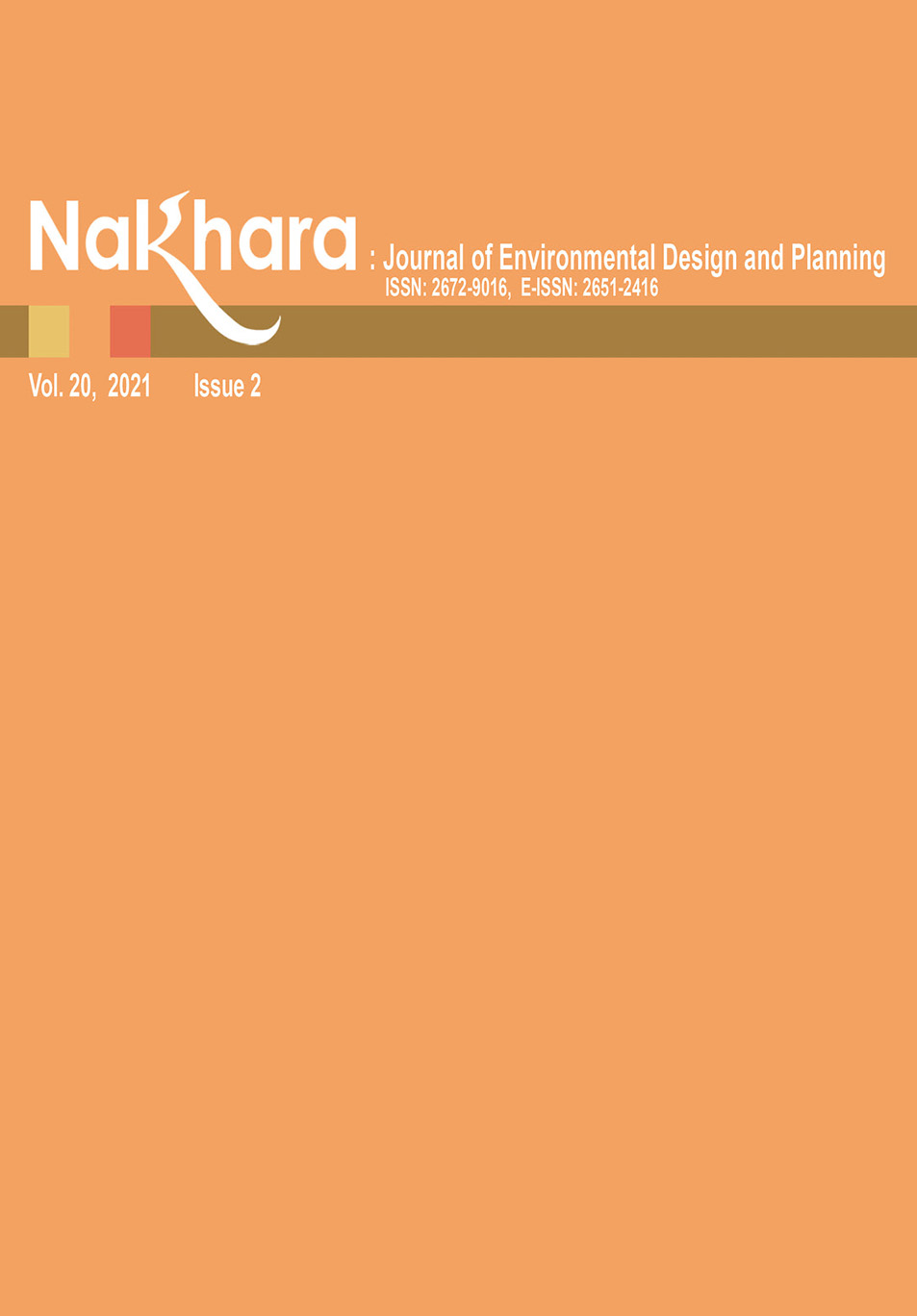Influence of Building Characteristics and Building Lifespan on Condominium Operating Expenses
Main Article Content
Abstract
This paper is an exploration of building lifespan, building characteristics, and operating expenses. The main objectives are to identify the building component lifespan, including architectural components and engineering components, to determine the pattern of building component replacement life cycle and to examine the relationship between building characteristics and facility operating expenses. The investigation was undertaken through a study of thirty-nine residential condominiums located in Bangkok. The expense data were collected through document searches and surveys with key juristic persons of each condominium. The building service life document was collected from international references and standards. The data were examined using cross-case analysis to identify the lifespan of the buildings and to identify the relationships between the condominium operating expenses and the characteristics of the buildings. It was found that the typical building replacements occur on a broad 60-year cycle that can be subdivided into several phases. Further findings indicate that a significant pattern of building component replacement shifts every two decades through the building lifespan. It was also found that the condominium operating expenses vary according to the building age and building characteristics. Direct variation, inverse variation, and joint variation from the characteristics of the condominium building can be identified. The findings add to the understanding of condominium operating expenses based on building characteristics. The study can provide a reference for consideration of building selection criteria and replacement plans, and for building budget planning based on age and building characteristics.
Article Details

This work is licensed under a Creative Commons Attribution-NonCommercial-NoDerivatives 4.0 International License.
References
American Society of Heating, Refrigeration, and Air-Conditioning Engineers (ASHRAE). (2010). ASHRAE equipment life expectancy chart. Formsbank. https://www.formsbank.com/template/116249/ashrae-equipment-life-expectancy-chart-cullum.html
Architectural Institute of Japan. (1993). The English edition of principal guide for service life planning of buildings. Architectural Institute of Japan.
Ashworth, A., & Perera, S. (2010). Cost studies of buildings (5th ed.). Routledge.
Beckman, S.L. & Rosenfield, D.B. (2008). Operation strategy: Competing in 21st century. McGraw-Hill Irwin.
Building Engineering Services Association (1990). SFG20 the industry standard for building maintenance specifications. https://www.sfg20.co.uk/what-is-sfg20/
Canada Mortgage and Housing Corporation. (2003). Capital replacement planning manual. Canada Mortgage and Housing Corporation. CMHC-SCHL. https://assets.cmhc-schl.gc.ca/sf/project/cmhc/pdfs/content/en/63171_en_w_acc.pdf
Canadian Standards Association. (1995). CSA S-478 guideline on durability in buildings. Canadian Standards Association.
Chartered Institution of Building Services Engineers. (2008). Guide M: Maintenance engineering and management - A guide for designers, maintainers, building owners and operators, and facilities managers. Chartered Institution of Building Services Engineers (CIBSE).
Chotipanich, S. (2010). Kānbō̜rihān sapphayākō̜n kāiyaphāp: lakkān læ thritsadī [Facility Management: principles and theories]. Chulalongkorn University Press.
Chotipanich, S., & Issarasak, S. (2017). A study of facility management operation strategy in shopping malls: Insights from 4 top-class shopping malls in Bangkok. Property Management, 35(3), 236-253. https://doi.org/10.1108/PM-07-2015-0029
Cotts, D. G., & Rondeau, E. P. (2004). The facility manager’s guide to finance and budgeting. AMACOM.
Dell'lsola, A. J., & Kirk, S. (1981). Life cycle costing for design professionals. McGraw-Hill.
Dhillion, B.S. (1989). Life cycle costing: Technique, models and applications. Gordon and Breach Science Publishers.
Dias, W. P. S. (2013). Factors influencing the service life of buildings. Engineer: Journal of the Institution of Engineers, Sri Lanka, 46(4), 1-7. https://doi.org/ http://dx.doi.org/10.4038/engineer.v46i4.6801
Hermans, M. H. (1995). Deterioration characteristics of building components: A data collecting model to support performance management [Doctoral dissertation, Technische Universiteit Eindhoven]. https://doi.org/10.6100/IR430495
Housing Association Property Manual Limited. (1992). HAPM component life manual. E & FN Spon.
International Association of Certified Home Inspectors. (2006). InterNACHI's estimated life expectancy chart for Florida homes. https://www.nachi.org/florida-life-expectancy.htm
Klammt, F. (2004). Financial management for facility manager. In Teicholz, E. (Ed.) Facility design and management handbook, pp. 95-132). McGraw - Hill.
Krstić, H., & Marenjak, S. (2012). Analysis of buildings operation and maintenance costs. GRA ĐEVINAR, 64 (4), 293-303. https://doi.org/10.14256/JCE.651.2011
Langston, C., & Kristensen, R. L. (2002). Strategic management of built facilities. Butterworth-Heinemann.
Paramasivan, C. & Subramanian, T. (2009). Financial management. New Age International
Raymond, J.C. & Sterner, E (2000). Reconciling theory and practice of life-cycle costing. Building Research & Information, 28(5-6), 368-375. https://doi.org/10.1080/096132100418519
Robertsen, E. (1999). Design for durability - A practical approach. In M. A. Lacasse & D. J. Vanier (Eds.)., Durability of Building Materials and Components 8, pp. 2107-2117). Institute for Research in Construction. https://www.irbnet.de/daten/iconda/CIB2270.pdf
Schoen, L.J.P.E. (2010). Preventive maintenance guidebook : Best practices to maintain efficient and sustainable buildings.ICAP. https://icap.sustainability.illinois.edu/files/projectupdate/2289/Project%20Lifespan%20Estimates.pdf
Seeley, I.H. (1993). Building maintenance, (2nd ed.). Macmillan.
Springer, T. (2004). Facility management- an introduction. In Teicholz, E. (Ed.), Facility design and management handbook (pp. 5-30). McGraw - Hill.
Stanford, H. W. (2010). Effective building maintenance: Protection of capital assets. Fairmont Press.
The American Hospital Association. (2013). Estimated useful lives of depreciable hospital assets. AHA Press.
The British Standards Institution. (1992). BS 7543 guide to durability of building and building elements, products, and components. BSI Standard Limited.

